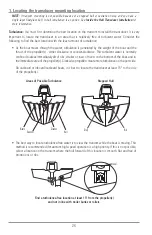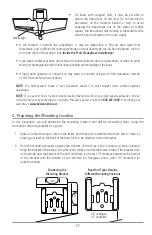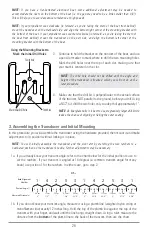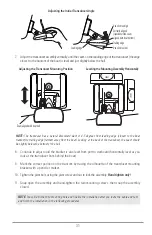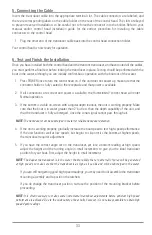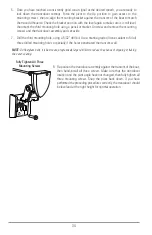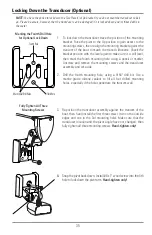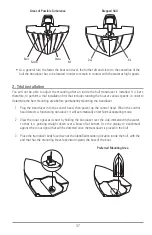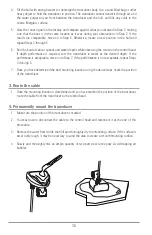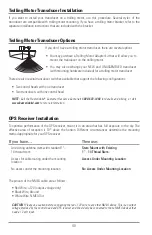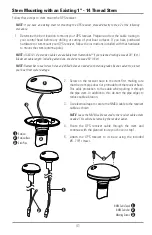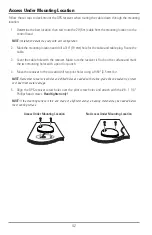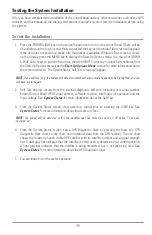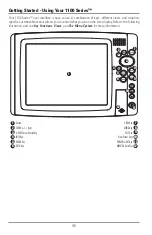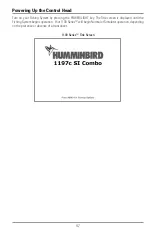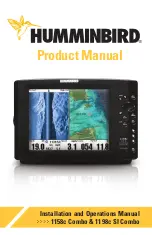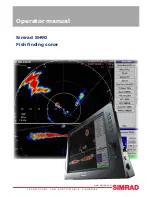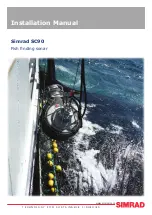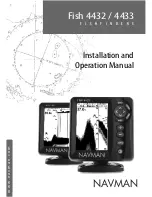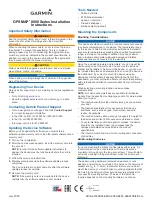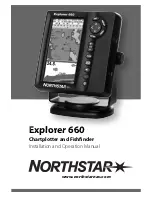
4. Fill the hull with enough water to submerge the transducer body. Use a sand-filled bag or other
heavy object to hold the transducer in position. The transducer cannot transmit through air, and
the water purges any air from between the transducer and the hull, and fills any voids in the
coarse fiberglass surface.
5. View the sonar signal on the display and compare against what you observed in Step 2, making
sure that the boat is in the same location as it was during your observations in Step 2. If the
results are comparable, move on to Step 6. Otherwise, locate a new position in the hull and
repeat Steps 3 through 5.
6. Run the boat at various speeds and water depths while observing the screen on the control head.
If depth performance is required, test the transducer in water at the desired depth. If the
performane is acceptable, move on to Step 7. If the performance is not acceptable, repeat Steps
3 through 6.
7. Once you have determined the best mounting location using the above steps, mark the position
of the transducer.
3. Route the cable
1.
Once the mounting location is determined and you have marked the position of the transducer,
route the cable from the transducer to the control head.
4. Permanently mount the transducer
1.
Make sure the position of the transducer is marked.
2. You may have to disconnect the cable to the control head and reconnect it at the end of this
procedure.
3.
Remove the water from inside the hull and thoroughly dry the mounting surface. If the surface is
excessively rough, it may be necessary to sand the area to create a smooth mounting surface.
4.
Slowly and thoroughly mix an ample quantity of two-part slow cure epoxy. Avoid trapping air
bubbles.
38
Содержание 1157c Combo CHO
Страница 1: ......
Страница 2: ......
Страница 59: ...49 boat including the following items 7 8 10 3 4 5 6 9...
Страница 70: ...Dumped Logs 1 Submerged Barge with Dumped Logs Submerged Barge 2 1 2 60...
Страница 115: ...Setup Tab Normal User Mode Setup Tab Advanced User Mode 105...



